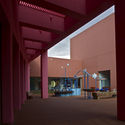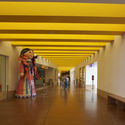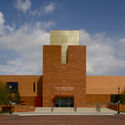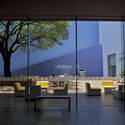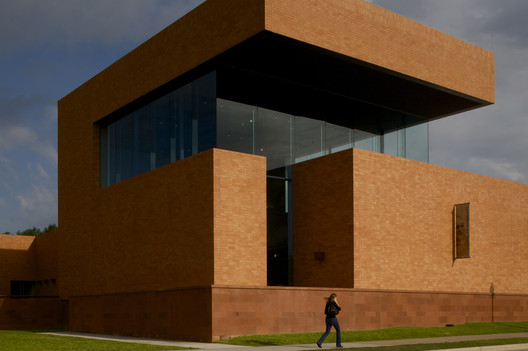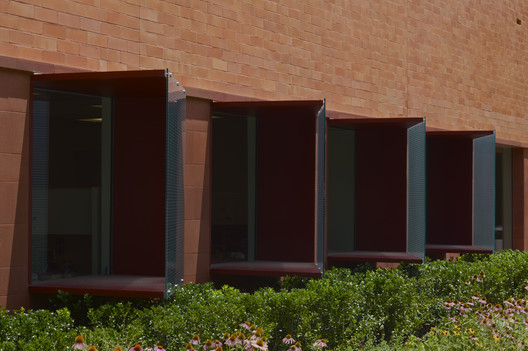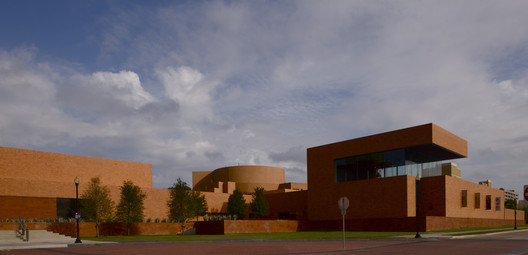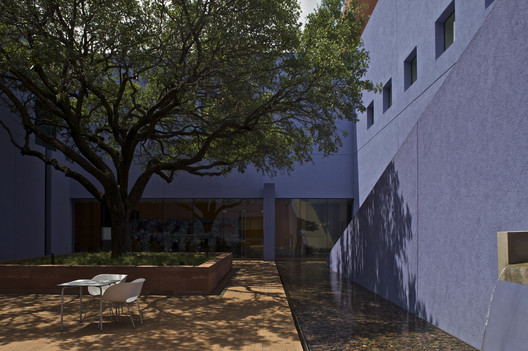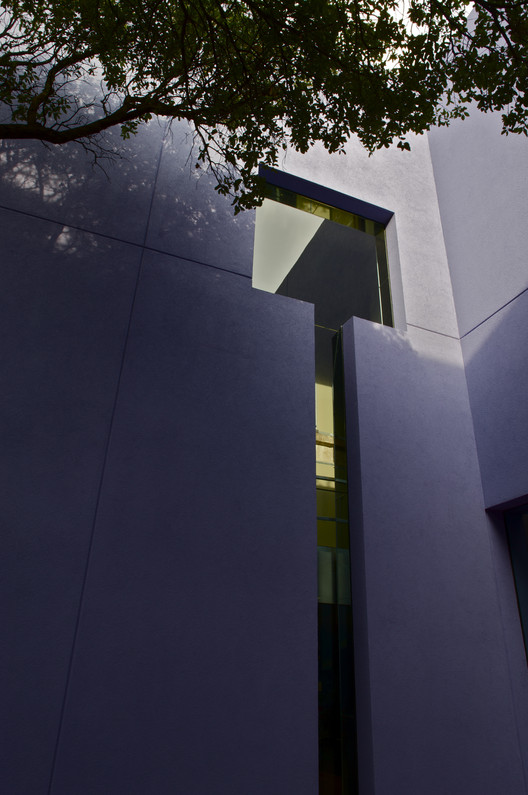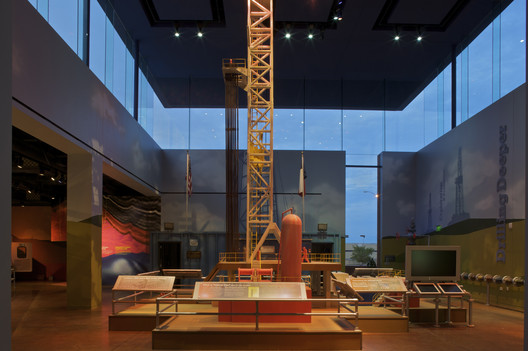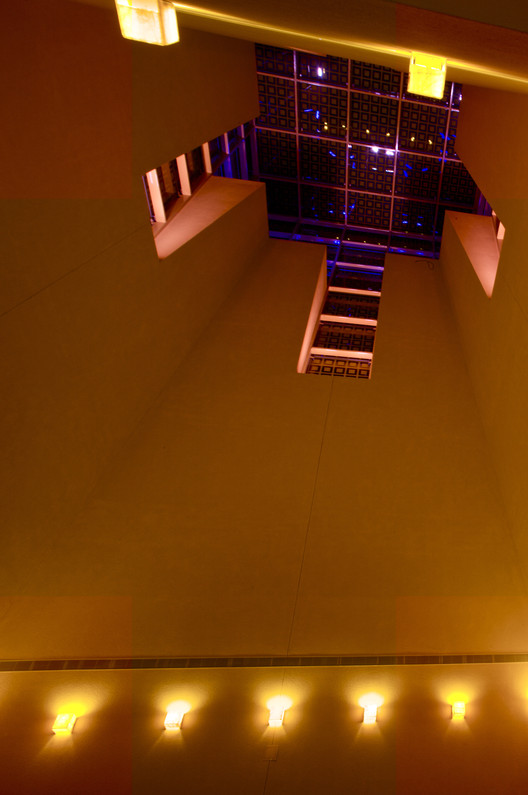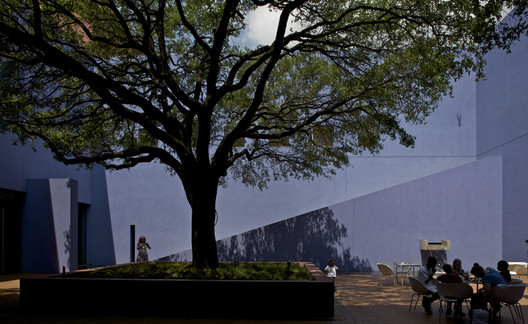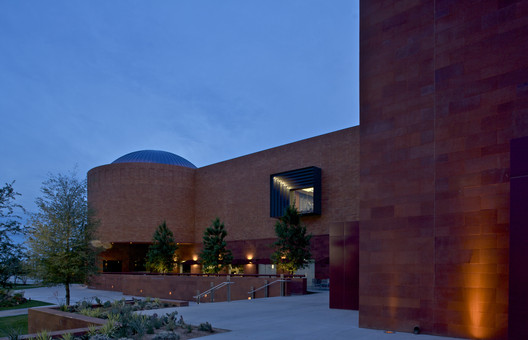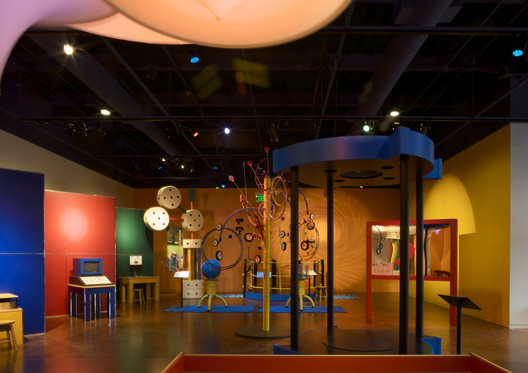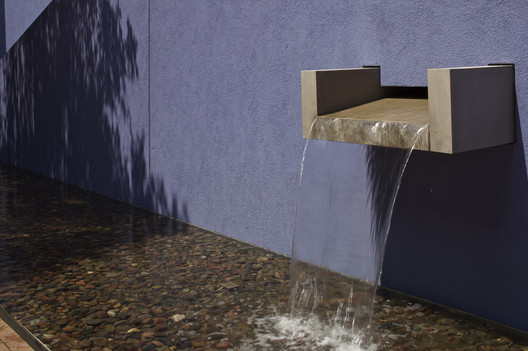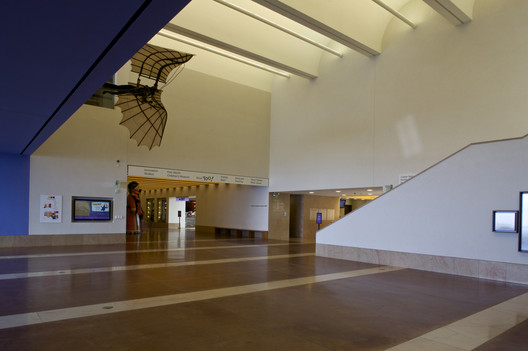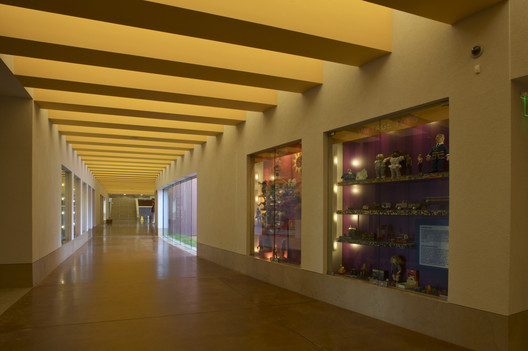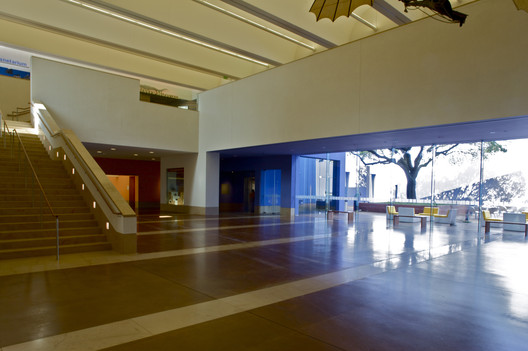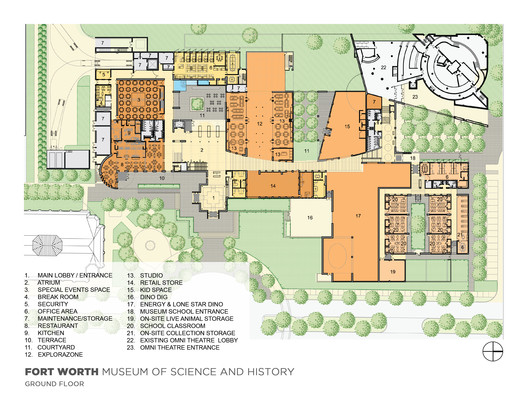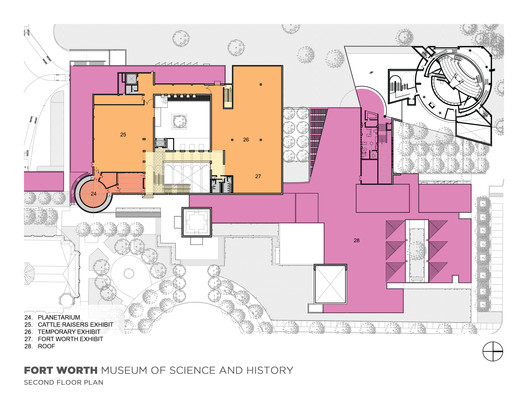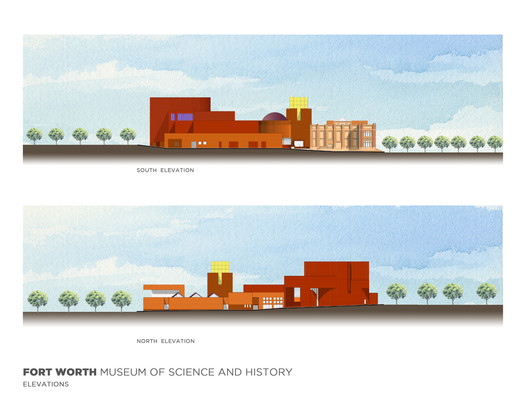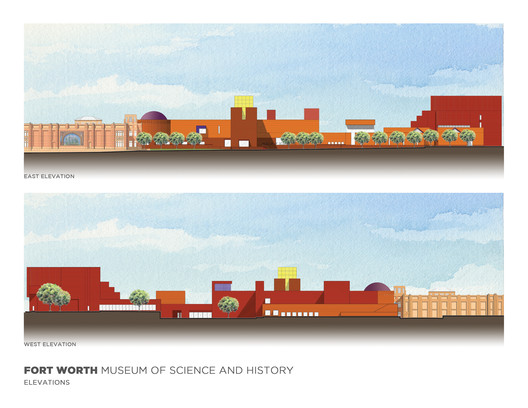
-
Architects: LEGORRETA
- Area: 18600 m²
- Year: 2009
-
Photographs:Lourdes Legorreta
-
Manufacturers: GRAPHISOFT, Zone Display Cases, Barrisol, Daltile, Mosaicos Venecianos de México®, Rockfon
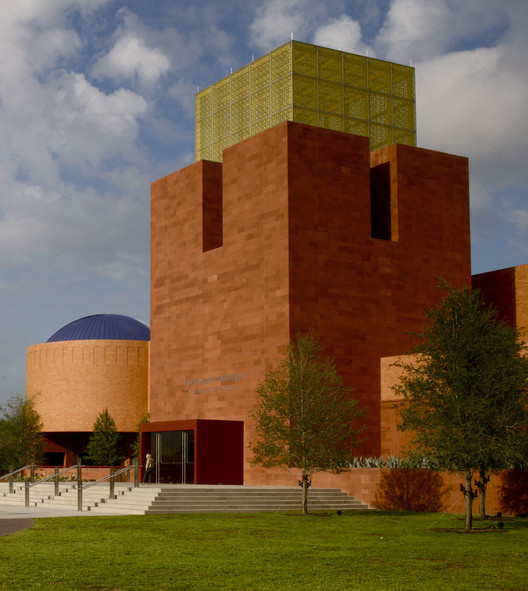
Text description provided by the architects. The Fort Worth Museum of Science and History is located at Fort Worth's Cultural District among very important 20th-century architecture such as the Kimbell Art Museum by Louis Kahn, the Modern Art Museum by Tadao Ando and the Amon Carter Museum by Phillip Johnson. The original Fort Worth Museum of Science and History was built in 1954, afterward completed by the Noble Planetarium in 1955 and then the OMNI Theater in 1983 which has been preserved and integrated into the new building complex connected by the Omni Link. The relationship within the existing site elements was an important design concern. Visitors access the New Building passing by a tree-shaded plaza that connects to the Main Access and also to the Cowgirls Museum designed by David M. Schwarz.



The plaza is overtopped by a main emblematic Tower/Lantern, signalizing the entrance of the Museum. The New Facility consists of several components interacting constantly with each other. An important element is the Museum School since the educational part of the exhibitions is a strong statement. Spacey and illuminated classrooms are facing a courtyard. Other elements of the architectural program are the Experimental Studios; ExploraZone; an outdoor DinoDig. Furthermore, there is Children's Museum, as well as pleasant outdoor areas like for instance a terrace, pergola area, reflected pool, and a shadowed courtyard gives the opportunity to entertain the youngest visitors of the Museum.

The design focused on creating spaces that are easy to understand for children and accessible for school groups. Other main spaces of the Museum are the large open spaces that house the Dinosaur Collection, ExploraZone and the Energy Exhibition, additionally the Cattle Raisers Museum, a Temporary Exhibit Area and the Fort Worth History Exhibition which is integrated into the circulation space to give the visitors a unique experience. There is also a new Noble Planetarium linked to the Cattle Raisers Museum. Besides the Exhibition areas, there are Commercial areas such as a Restaurant, Retail Store and a Special Events Space which is adjustable to diverse programs. Office areas are two; Museum School Offices and Executive Offices.



